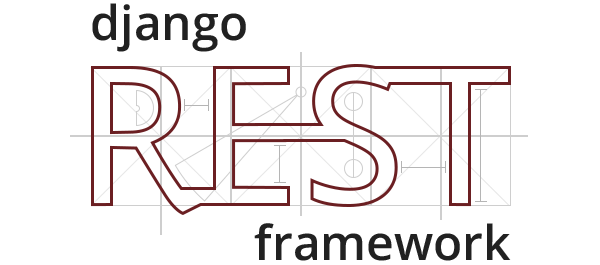
Django Rest Framework
DRF, short for Django Rest Framework, is a powerful and flexible toolkit for building Web APIs (Application Programming Interfaces) in Django, a popular Python web framework. DRF simplifies the process of creating RESTful APIs, allowing developers to focus on designing and implementing the data models and business logic of their applications while handling the complexities of API development.
Here are some key aspects and features of Django Rest Framework (DRF):
- Serialization:
- DRF provides a serialization framework that allows you to convert complex data types, such as Django model instances or querysets, into Python data types (like dictionaries or JSON) that can be easily rendered into JSON, XML, or other content types.
- It also supports deserialization, allowing incoming data in various formats (JSON, XML, etc.) to be converted into Python objects.
- Authentication and Authorization:
- DRF offers built-in support for various authentication methods, including token-based authentication, OAuth2, and session-based authentication.
- It also provides fine-grained permission classes to handle authorization, allowing you to control access to specific API views or actions based on user roles and permissions.
- Viewsets and Routers:
- DRF introduces the concept of viewsets, which are classes that define the CRUD (Create, Read, Update, Delete) operations for a model. Viewsets are a high-level abstraction that simplifies API view development.
- Routers are used to automatically generate URL patterns for viewsets, making it easy to define the routing for your API.
- View Classes:
- DRF offers a variety of view classes for handling HTTP requests, such as
APIView,ModelViewSet, andGenericAPIView. These classes provide pre-built functionality for common API tasks. - You can also create custom views by extending these classes to meet your specific requirements.
- DRF offers a variety of view classes for handling HTTP requests, such as
- Pagination and Filtering:
- DRF includes built-in support for paginating large datasets, making it easy to handle and display data in manageable chunks.
- It provides filtering capabilities, allowing users to filter data based on query parameters in the URL.
- Validation:
- DRF includes automatic request and response data validation, ensuring that data sent to your API conforms to defined schema and validation rules.
- Customization:
- While DRF provides a lot of built-in functionality, it’s highly customizable. You can extend or override components like serializers, views, authentication, and permissions to tailor the API to your application’s specific needs.
- Documentation:
- DRF includes automatic API documentation through the use of tools like Swagger and ReDoc, making it easy to generate and publish interactive API documentation for your API consumers.
- Versioning:
- DRF supports versioning of APIs, allowing you to maintain multiple versions of your API to ensure backward compatibility as your application evolves.
Django Rest Framework has become a popular choice for building APIs in the Django ecosystem due to its robust features, ease of use, and extensive documentation. It simplifies many of the complexities involved in API development, making it an excellent choice for building web services and RESTful APIs in Django applications.